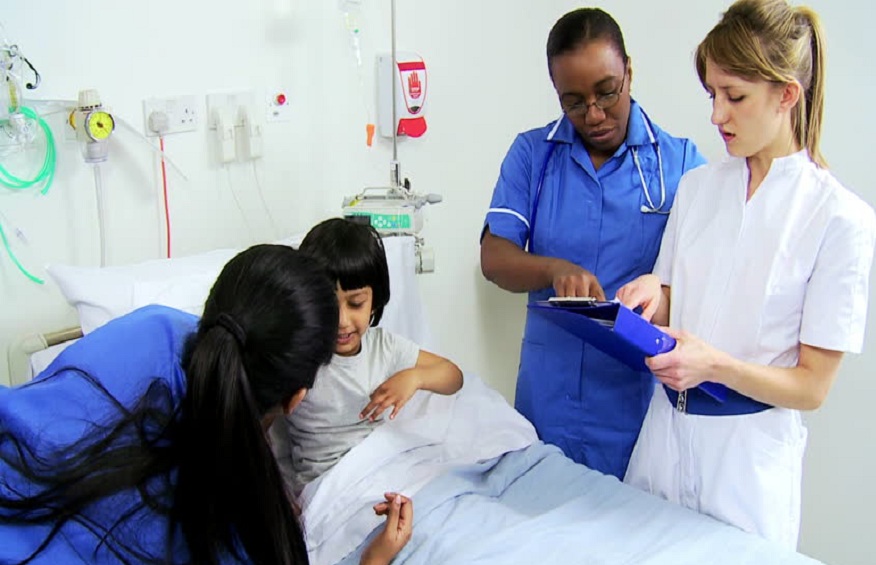Paediatric Respiratory Medicine: Breathe Easy
3 min read
The ability to breathe freely is something many of us take for granted, but for children with respiratory conditions, every breath can be a challenge. Paediatric respiratory medicine focuses on the diagnosis, treatment, and management of respiratory disorders in children, aiming to help them breathe easy and lead healthy lives. In this blog post, we will explore the importance of paediatric respiratory medicine, common respiratory conditions in children, and the strategies used to improve their respiratory health.
Understanding the Significance
Respiratory health is vital for a child’s overall well-being and development. The lungs are responsible for supplying oxygen to the body and removing waste gases. When respiratory function is compromised, it can lead to various health issues and hinder a child’s growth, physical activity, and academic performance. Paediatric respiratory medicine plays a crucial role in diagnosing and treating respiratory conditions, ensuring that children can breathe easily and thrive.
Common Respiratory Conditions
Several respiratory conditions can affect children, ranging from acute infections to chronic disorders. Some common paediatric respiratory conditions include:
a) Asthma: Asthma is a chronic condition characterized by inflammation and narrowing of the airways, leading to recurrent episodes of coughing, wheezing, and shortness of breath.
b) Cystic Fibrosis: Cystic fibrosis is a genetic disorder that affects the lungs and other organs. It causes the production of thick mucus, leading to frequent respiratory infections and breathing difficulties.
c) Pneumonia: Pneumonia is an infection that inflames the air sacs in one or both lungs, resulting in symptoms such as cough, fever, and difficulty breathing.
d) Bronchiolitis: Bronchiolitis is a viral infection that primarily affects infants and young children, causing inflammation and blockage of the small airways in the lungs.
Diagnosis and Treatment Approaches
Accurate diagnosis is crucial for effective management of paediatric respiratory conditions. Healthcare professionals may employ various methods to diagnose respiratory disorders, including physical examinations, lung function tests, imaging studies, and laboratory tests. Once a diagnosis is made, an individualized treatment plan is developed to address the specific condition. Treatment approaches may include:
a) Medications: Medications such as bronchodilators, inhaled corticosteroids, and antibiotics (if applicable) are commonly prescribed to manage symptoms, reduce inflammation, and prevent infections.
b) Pulmonary Rehabilitation: Pulmonary rehabilitation programs provide comprehensive support, including exercise, education, and breathing techniques, to improve lung function and enhance overall respiratory health.
c) Oxygen Therapy: In cases of severe respiratory compromise, supplemental oxygen may be administered to ensure adequate oxygenation of the body.
d) Lifestyle Modifications: Lifestyle modifications, such as avoiding triggers (e.g., allergens or pollutants) and maintaining a healthy lifestyle, can help reduce the frequency and severity of respiratory symptoms.
Prevention and Education
Prevention plays a vital role in paediatric respiratory medicine. Educating parents, caregivers, and children themselves about respiratory hygiene, such as proper handwashing, covering the mouth and nose while coughing or sneezing, and maintaining a clean environment, can help reduce the risk of respiratory infections. Additionally, vaccinations, especially for diseases like influenza and pertussis, can provide added protection against respiratory illnesses.
Collaborative Care and Support
Paediatric respiratory medicine involves a multidisciplinary approach, with healthcare professionals, including paediatricians, pulmonologists, respiratory therapists, and nurses, working together to provide comprehensive care. Collaborative care ensures a holistic approach to managing respiratory conditions, addressing not only the physical aspects but also the emotional and psychological well-being of the child and their family. Support groups and patient education programs further contribute to empowering families and improving their ability to manage respiratory conditions effectively.
Conclusion
Paediatric respiratory medicine plays a vital role in helping children breathe easy and enjoy a healthy life. By understanding common respiratory conditions, ensuring accurate diagnosis, and implementing appropriate treatment plans, healthcare professionals can improve the respiratory health of children. Prevention measures, education, and collaborative care further enhance the effectiveness of paediatric respiratory medicine. By prioritizing respiratory health and providing comprehensive support, we can empower children with respiratory conditions to overcome challenges, breathe freely, and embrace a brighter future.





